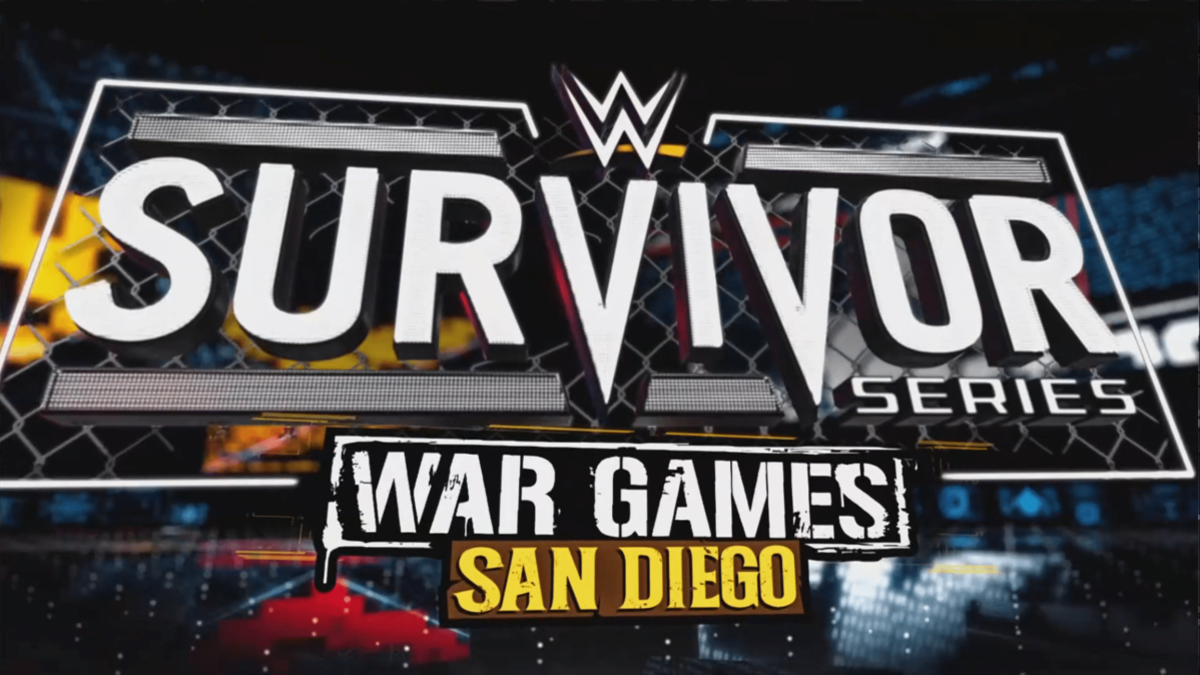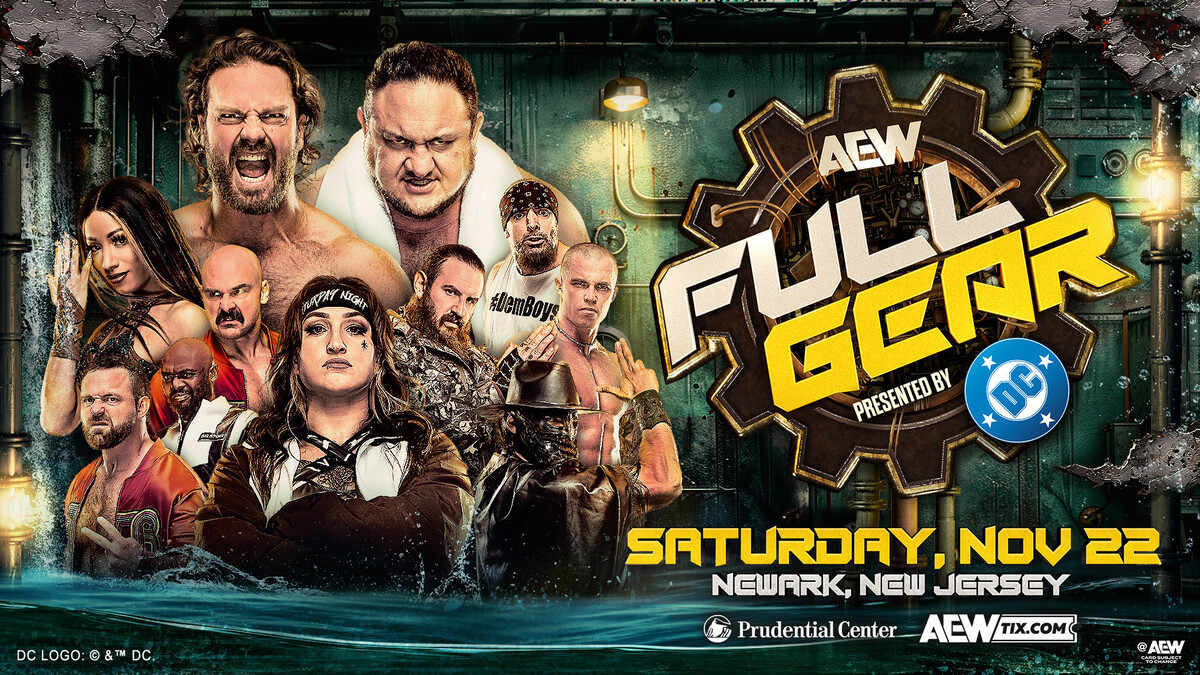ON DECEMBER 1-2, 2012 — THE VERY WEEKEND I thought I would be putting the finishing touches on this introductory essay — the National Football League had its very own Chris Benoit. Jovan Belcher, a 25-year-old linebacker for the Kansas City Chiefs, shot his girlfriend (the mother of their two-month-old daughter) nine times, in the presence of his own mother. Kasandra Perkins, 22, died within minutes. Belcher then drove to the nearby Chiefs’ practice facility at the Arrowhead Stadium complex, and ignoring the pleas of the team’s coach and general manager, and just as the police pulled up, blew his own brains out.

On June 25, 2007, WWE’s top executives, who already knew Chris Benoit had murdered his wife Nancy and their seven-year-old son before taking his own life (though Vince and Linda McMahon were careful not to share that information with the performers under their thumb), decided to go forward with a new live episode of Raw that night. Five years later, the NFL decided whether to keep on schedule the Chiefs’ game the next day against the Carolina Panthers.
The NFL’s decision was perhaps a tad more effortless. The football people spun a tale of tragedy and sweet sentiment, the latter built around the woebegone Chiefs’ inspirational victory despite hearts as heavy as their offensive guards. The fans at Arrowhead observed a moment of silence and had other production flourishes in honor of “victims of domestic violence.” Two of the league’s broadcast partners, Fox and CBS, dealt with the events cursorily as part of their normal coverage of a package of Sunday games. A third, NBC, focused in prime time on the aftermath of the Chiefs’ emotional victory on the field earlier that day; Bob Costas added commentary suggesting that we all take away from these gruesome events the need for better… gun control.
It’s hard to say whether the $10-billion-a-year NFL could have pulled off all this so smoothly in the absence of what turned out to be Belcher’s legal possession of a veritable arsenal of firearms — one of which he turned on Kasandra, another on himself. In our story, Chris Benoit did not use a gun to kill Nancy or Daniel or himself. The nebulous “gun culture” that Costas railed against was, however, also somewhat in evidence in wrestling. As we were gathering photos for the original edition of this book, a collection of images from one of Benoit’s WWE tours entertaining American military forces in Iraq, for the holiday television special Tribute to the Troops, was submitted over the transom by a freelance photographer. These showed Benoit and fellow wrestlers posing with automatic rifles, which soldiers on duty apparently had handed over to them for this purpose. My publisher, ECW Press, told the photographer no thanks.
Make of my comparisons and contrasts what you will. Participants in the blame game look at the perpetrator, the circumstances, the mode of crime, and last but not least the “culture,” as variously defined. The deeper mystery of what motivates domestic murder-cum-suicide invites any and all speculation.In the event, football definitely shared with pro wrestling some sharp criticism of its show-must-go-on mentality. But as an entity that famously proceeded with a slate of games in the wake of the 1963 assassination of President John F. Kennedy (and at first vied for business as usual right after the 9/11 terror attacks in 2001, before New York Jets players practically went on strike), the NFL expected nothing more — or less. Neither did its public.
I’m not yet sure what other big-picture parallels can be drawn. In the slow-news summer of ’07, most of the follow-up talk on Benoit was about steroids. The possible additional factor of brain injury did not gather momentum until September, when Boston’s Sports Legacy Institute highlighted the study of Benoit’s brain tissue and finding of chronic traumatic encephalopathy by Dr. Bennet Omalu. Since then, CTE and associated public-health costs from American football have become, in my view, the No. 1 issue in sports — a story with a tail that will drag deep into the twenty-first century, through litigation and policy debates. At this writing I am much too close to the Belcher incident to offer useful perspective on the impact the combined Benoit and Belcher criminal anecdotes are having on those debates.
Of course, some of us wrestling fans/observers/critics hold the opinion that wrestlers are ‘canaries in the coal mine’ — that what happens to them is destined to play out later for their brethren in more “legitimate” sports. In that spirit, let’s take a wild guess and predict that the Belcher tragedy will fill the bill. And let’s move on to what I had intended to say before the real world of the NFL intruded on my updated contemplation of the real world of WWE.
* * *
I WAS GOING TO START WITH BLACK HUMOR — by asserting, tongue in cheek, that the most significant new development vis-à-vis this narrative, between first publication and today, was the rejection of Roger Clemens by the sportswriters who vote for the Baseball Hall of Fame. Post-Benoit, the United States House of Representatives Committee on Oversight and Government Reform, then chaired by Congressman Henry Waxman, investigated WWE’s “wellness policy.” But as I explain below in unlucky Chapter 13, the Waxos sort of lost interest somewhere along the way. The release of baseball’s Mitchell Report on steroids promised more bang for the pandering buck. Conflicting testimony over the injections of growth hormone into Clemens’ formidable ass by his estranged personal trainer, Brian McNamee, was the basis of a sensational internationally televised Oversight Committee hearing — leading to criminal perjury charges against Clemens, of which he would be acquitted at trial. Those casting Hall of Fame ballots, though, have been less forgiving to Clemens and to the other alums of what is termed baseball’s Steroid Era, including home run kings Barry Bonds, Mark McGwire, and Sammy Sosa.
The clinching aphorism here is a hoary one in my dog-eared joke book: “People care much more about fake records in the real sport of baseball than they do about real deaths in the fake sport of wrestling.”
NO, OBVIOUSLY, THE MOST IMPORTANT thread since CHRIS & NANCY 1.0 went to bed is not Roger Clemens. Rather, it picks up literally from the very last line of the book. I refer to the dismal political career of Linda Edwards McMahon.
When we were so rudely interrupted in 2009, Linda had just been appointed to the Connecticut Board of Education. But she and Vince were after much bigger game. Over the next three years, supported by a total of nearly $100 million in “self-funding,” Linda twice ran for a seat in the U.S. Senate. Each campaign was as disruptive of the partisan democratic process as it was spectacularly expensive and unsuccessful.
In 2010 Linda McMahon won the Republican nomination over a patrician moderate and former congressman, Rob Simmons, before losing by about a dozen points to the popular long-time state attorney general, Richard Blumenthal, in the general election. At one point McMahon was thought to have a chance when she bloodied up Blumenthal with exposure of his lies about his military service. (Over the years Blumenthal had said, or at least suggested, that he was a Vietnam veteran, when in fact he had simply served stateside in the Reserves in the Vietnam war era.) But the voters were ultimately repulsed by Linda’s policy inexperience, her robotic message, and her saturation TV advertising and mailers.
In 2012 Linda McMahon won the Republican nomination over a patrician moderate and former congressman, Chris Shays, before losing by about a dozen points to another congressman, Chris Murphy, who was far less well known and popular than Blumenthal, in the general election. At one point McMahon was thought to have a chance when she bloodied up Murphy with exposure of his past difficulties in meeting home mortgage payments. This gambit boomeranged when a New London newspaper, The Day, dug up detailed records on the now centimillionaire McMahons’ default on debts totaling $1 million in their 1976 bankruptcy. In addition, the voters were repulsed by Linda’s policy inexperience, her robotic message, and her saturation TV advertising and mailers (including but not limited to the week before the election, as the people of the state dug out of the wreckage of Hurricane Sandy, and the state Republican party refused to endorse McMahon’s effort to pin on Murphy the frustration of voters with their beleaguered electric utility company). There were further banana-peel wrinkles — capped on Election Day by the McMahon campaign’s epic-fail payments to mercenaries in African-American precincts who pushed ticket-splitting votes for the Democrat Barack Obama for president and the Republican McMahon for senator.It was for carbon-copy recurrences like these that my fellow St. Louisan Yogi Berra (or his childhood neighbor and later baseball catching colleague Joe Garagiola — or whoever writes Yogi’s material) coined the phrase “déjà vu all over again.”
My own intrusion into Connecticut politics was much more substantial the first time around than the second. In 2010, I did a mini-bookstore tour and media blitz in support of the just-published CHRIS & NANCY. One TV news outlet, WTNH, even made me the lead story at six o’clock (presumably because nothing else that day that bled could be led). And the state public radio talk maven confronted Linda with a taped sound bite from his interview of me a few days earlier. The hapless and outgunned Congressman Simmons was said to walk around with a copy of my book in his pocket.
In my role as designated civic schoolmarm, I bemoaned the focus on the misogynstic and lowbrow content of WWE television content on Linda’s watch as company CEO. Instead, I urged examination of pro wrestling’s gratuitously hazardous occupational health and safety — the, ahem, cocktail of death. After the sudden passing in the middle of the campaign, at age 29, of ex-WWE performer Lance Cade, we had what I considered the most damning example. Among other outrages, there was Raw video of Cade getting blasted over the head with a chair by Shawn Michaels — a year after Vince and Linda McMahon told CNN they were eliminating this practice out of an abundance of caution.
Weeks before the election, the Blumenthal campaign asked me to help arrange for Michael Benoit, Chris’s dad, to travel from Edmonton to Hartford for a Linda-bashing news conference. I obliged. Mike and I have become friends through his advocacy of brain-trauma awareness as a legacy of what happened to his family. According to Mike, Blumenthal looked him in the eye at their meeting in Hartford and shook hands on a pledge to carry forward energetically on the issues that had given rise to the fly-in of a Western Canadian for a partisan political fight in the Eastern United States.Following his victory at the polls, Blumenthal did not once respond to letters from me suggesting that he had a moral obligation in these areas — for example, to help ensure that an election year state audit of WWE’s abuse of independent contractor classification, which quickly fizzled, had some teeth. To Tricky Dick, I say, “Screw you too.”
During Linda 2.0 in 2012, I was, by calculation, much less visible. The main exception was in October, when someone — a disgruntled WWE employee or ex-employee, I suppose — anonymously sent me an internal company document about its multimillion-dollar settlement of a state tax dispute. Though not naïve about its injection late in the Senate campaign, I actually thought the story flowing from it was only mildly revealing. But Linda didn’t need further reinforcement of the message that she was a rich person enriched by a rich corporation that hired the richest lawyers and accountants so as to make its tax bill less rich. For me, the takeaway was a belated awareness of bipartisan exploitation of one of the more ludicrous plutocratic loopholes in our tax system: state-by-state tax credits for companies involved in producing ‘films,’ and the deficit-defying secondary market in them among beneficiaries. Truth be told, a number of mainstream Connecticut journalists — whom I tended to criticize for being soft on Linda McMahon — had been aggressively and incisively reporting on this issue for years.
This all reminds me to tell you that many of the web links in the book below are out of date. My website is now http://concussioninc.net, and in the archives there you can read everything I wrote about everything at the time.
* * *
I DON’T BELIEVE IN AIRBRUSHING HISTORY, including my own. The only differences between the pages you are about to read, and the original hard-copy edition of this book, are a handful of corrections of known typographical and other errors; the latter are flagged with footnotes. Though I take all mistakes seriously, I also realize that a threshold of them is inevitable, especially in the age of blogs and Twitter. What matters more than the existence of errors is whether they were major or minor, habitual or incidental, and resolved in good faith.
I concluded the original introduction below by calling CHRIS & NANCY a “second draft” and expressing the basic hope that it would prod the complacent into continuing to retell the Benoit story and draw appropriate lessons from it. As a concept, that still sounds about right. Trying to list and prioritize all the various factors behind this tragedy is important. But more important is understanding that almost all of them emanate from the same source: an out-of-control entertainment industry, related in some fashion to the late-empire insecurities of a culture too abstracted from human values and too unregulated for public hygiene.
I have one specific, gigantic, hard-to-miss afterthought, and the name of my new site and the thrust of its work spell it out for you.
Within months of the book’s publication, the topicality of traumatic brain injury in sports and entertainment moved my investigations away from wrestling in favor of the far larger American obsession of football. The process validates the theme that the structures and behind-the-scenes manipulations of all mass spectacles (and you should go ahead and throw the political system in there along with wrestling, boxing, mixed martial arts, football, and hockey) turn out to be far more alike than different.
Mike Benoit recently emailed me, “If you had to do it over again, would you have emphasized chronic traumatic encephalopathy much more?”
My answer: “Yes.”
The idiosyncrasies of my writing career eased the process of catch-up. As I’ve said before, Archimedes was right: If you have a place to stand, you can move the world. The demimonde of wrestling provided a much more faithful foundation than you’d think.Dr. Joseph Maroon, the “medical director” of WWE, is also a guru on traumatic brain injuries for the NFL. There is not a doubt in my mind that he has played fastest and loosest with the truth in service of the latter. Along with his cronies at the University of Pittsburgh Medical Center, he has marketed ‘concussion awareness’ — a misnomer spinning the existential crisis of the sport of football over its intrinsic and systematic infliction of brain trauma — via a for-profit software company that rates somewhere between suspicious and fraudulent.
The fact that Chris Nowinski, who has become the nation’s leading lay activist on this issue, combines Harvard and WWE pedigrees, adds a delicious dollop of irony to this scandalous stew. I thought Nowinski did great work in launching the Sports Legacy Institute; got coopted when, in 2010, he accepted a $1 million NFL grant for the Boston University Center for the Study of CTE, which he also co-directs; and, more recently, has done great work again in forcefully arguing, along with Dr. Robert Cantu, for the elimination of tackle football for pre-high schoolers.
In 2013 and beyond, the question no longer should be whether we’re in a mess. It should be who will manage it, and how. Did I hear you say Vince McMahon and Roger Goodell, with the support of Joe Maroon? Please. As in the cover-up of the connection between tobacco and cancer, emphysema, and heart disease, you might as well ‘call for Phillip Morris.’
Before the climactic Mount Rushmore scene of Alfred Hitchcock’s North by Northwest, the Cary Grant character asks a secret agent which agency he represents. “FBI, CIA … they’re all the same alphabet soup,” the guy scoffs. And so, my fellow Americans, are the WWE and the NFL.
Irvin Muchnick
December 2012




